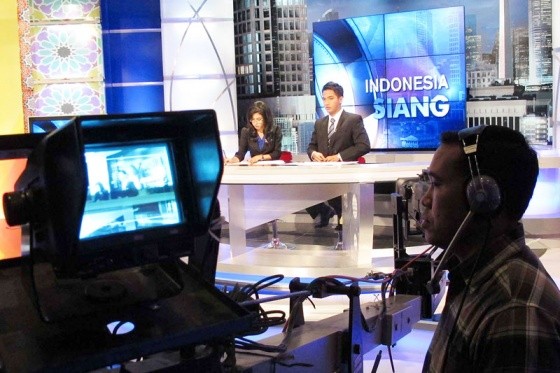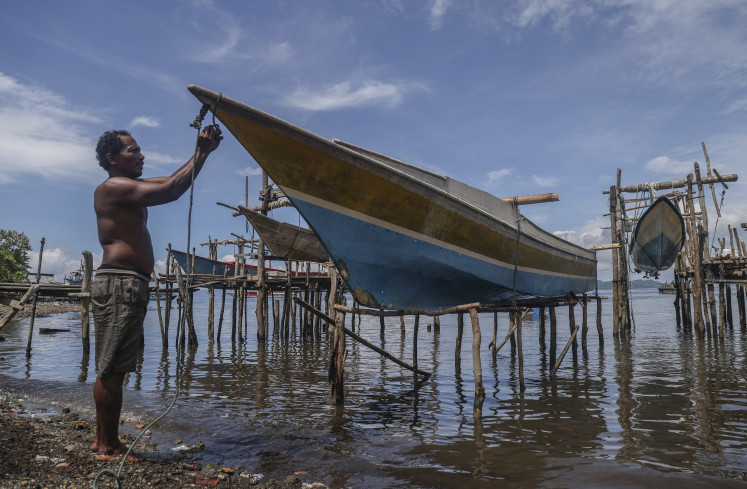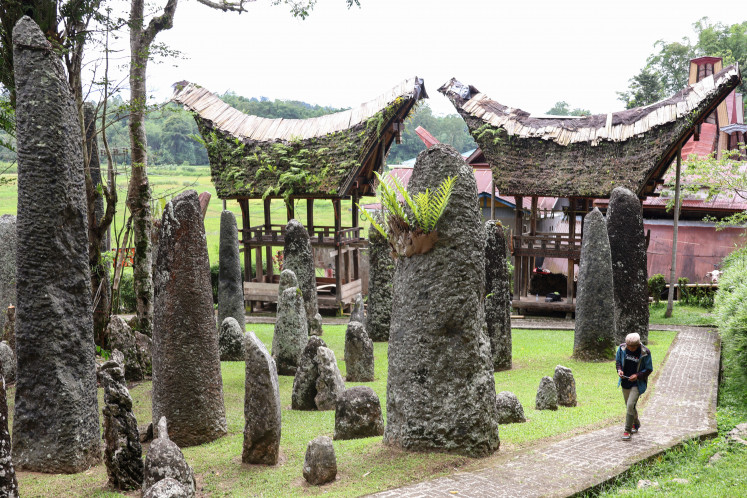Popular Reads
Top Results
Can't find what you're looking for?
View all search resultsPopular Reads
Top Results
Can't find what you're looking for?
View all search resultsThe myth of national private TV stations
The Reformation era greatly changed Indonesian broadcasting policy. Under the broadcasting law, four types of broadcasting were introduced. Pursuant to democratic principles, the law also strictly regulates private broadcasting in terms of ownership limitation, independent regulatory systems and network broadcasting systems, taking into consideration radio frequency as a limited natural resource and the pervasiveness of TV programs.
Change text size
Gift Premium Articles
to Anyone
I
n general, Indonesian audiences understand the term “national private TV station” to refer to a type of broadcasting under Broadcasting Law No. 32/2002. The fact is that the law divides broadcasting institutions into only four categories: private, public, community and cable.
National private TV stations are not recognized by the law. Worse, behind the term lies a centralistic logic of broadcasting with regard to the economy and culture.
Historically, national private TV channels arose as part of the New Order’s political agenda to mitigate information liberalization in Southeast Asia at the end of the 1980s. For fear that private broadcasting might promote liberal democracy, then president Soeharto opted to limit the permits for profit-seeking TV stations to his cronies.
The Reformation era greatly changed Indonesian broadcasting policy. Under the broadcasting law, four types of broadcasting were introduced. Pursuant to democratic principles, the law also strictly regulates private broadcasting in terms of ownership limitation, independent regulatory systems and network broadcasting systems, taking into consideration radio frequency as a limited natural resource and the pervasiveness of TV programs.
The National broadcasting system actually no longer exists — the permit is entrusted to provincial governments, according to the law. All TV stations are thus considered local. However, the term “national private station” remains existent,referring to Jakarta-based private TV stations. This is the myth created by the giant TV industry players simply to culturally justify their intention to broadcast nationwide and, hence, maintain the lion’s share of advertisements they enjoy.
The Advertising Agency Association has estimated TV revenue from commercials in 2015 at US$8.7 billion, or around 70 percent of total advertisement spending. It’s astounding that a few Jakarta-based local TV stations control such a huge amount of national cultural and economic resources.
So what should the TV stations do to broadcast out of Jakarta? The Broadcasting Law stipulates that under democratic principles, Indonesia should apply a network broadcasting system. To broadcast outside of their operational areas, TV stations must work with local TV stations or buy limited shares in local stations.
The system aims to ensure a diversity of opinions and cultures in a huge country like Indonesia. On top of that, the system supports distribution of wealth. Democratic countries like the US and Australia have long used similar systems.
Despite the legislation, major players in the TV industry refuse to comply with the network broadcasting system, claiming they are not yet ready to do so. A five-year transition period ended on Dec. 30, 2007, and was extended to Dec. 28, 2009, but the stipulation remains unenforced. Strangely, the government turns a blind eye to this blatant violation of law.
What we see today is a centralistic and Jakarta-based system of broadcasting. This of course triggers homogenization of opinions and cultures, as well as economic centralization.
The actual consequence of economic centralization is a monopoly of advertisement revenue. One established private TV station in Jakarta may reach an audience of more than 100 million, or over a third of the Indonesian population. This leads to a concentration of advertisement revenue at the expense of TV stations outside Jakarta. Unsurprisingly, non-Jakarta-based TV stations have collapsed, one by one.
Cultural domination is no less problematic. A research by Remotivi and Tifa Foundation (2014) found that 41 percent of news came from Greater Jakarta, with 45 percent from outside the region and the rest from abroad. The non-Jakarta news mostly concerned provincial capitals.
The centralized system of broadcasting marginalizes non-Jakarta viewpoints in terms of media reality. It will come as no surprise if such viewpoints die out entirely.
When non-Jakarta TV stations are unable to survive, they sell their assets and permits to Jakarta stations. Although this is illegal, as permits are not transferable, it is rampant. Provinces are becoming nothing more than channels of Jakarta’s cultural and economic desires.
Not only is the ownership structure of a “national private” station Jakarta-centered, it is also oligarchist. A businessman can operate more than one TV station in a province, which is legally flawed but remains unresolved.
The oligarchic practice of public frequency reached its worst level in the 2014 elections, when TV stations became tools of political propaganda, marking a nadir in the history of modern Indonesian journalism.
Under centralized ownership controlled by political desire, the misuse of public frequencies, as in the 2014 elections, may shift to the local elections, including the Jakarta gubernatorial election. This dangerous phenomenon is made more likely by the fact that non-Jakarta TV stations are controlled by Jakarta politicians.
President Joko “Jokowi” Widodo promised in his Nawacita (nine ideals) platform to reform national broadcasting policy. Now that the revision of the Broadcasting Law has been included in the list of priority national legislation, the government and the House of Representatives have the challenge to fight the lack of diversity perspective among major TV industry players and remove the “legacy” of New Order’s pseudo capitalism, which continues to dog our broadcasting industry.
***
The writer is a media expert at the Tifa Foundation, Jakarta.
---------------
We are looking for information, opinions, and in-depth analysis from experts or scholars in a variety of fields. We choose articles based on facts or opinions about general news, as well as quality analysis and commentary about Indonesia or international events. Send your piece to community@jakpost.com.










